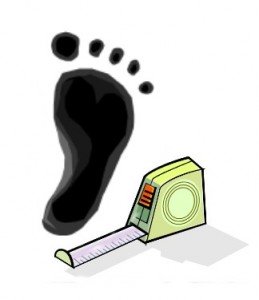Kate & Wills – April 29, 2011. Everyone who is anyone will be there, but what is the environmental impact of so many international guests descending on Westminster Abbey for the royal wedding?
 The scientists in Landcare Research’s CarboNZero program have run the numbers using their internationally recognised method of counting carbon emissions. Undertaken at the request of the UK newspaper the Telegraph, their analysis is self-described as just a “fun exercise”. The CarboNZero team analysed the various sources of carbon emissions that have arisen due to the royal wedding and made an approximate estimate of total total tonnes of carbon dioxide released into the atmosphere (with suitable disclaimers, of course).
The scientists in Landcare Research’s CarboNZero program have run the numbers using their internationally recognised method of counting carbon emissions. Undertaken at the request of the UK newspaper the Telegraph, their analysis is self-described as just a “fun exercise”. The CarboNZero team analysed the various sources of carbon emissions that have arisen due to the royal wedding and made an approximate estimate of total total tonnes of carbon dioxide released into the atmosphere (with suitable disclaimers, of course).
The analysis led to a large article in the Telegraph, and the Landcare Research press release and full report are also available.
Closer to home, Michelle Duff wrote an article on the analysis, ‘Leaving a right royal carbon footprint’, for Fairfax media (published in the Press and the Dominion Post)
An excerpt (you can read the full article here):
The carbon footprint generated by the royal wedding could be equalled by flying return between New Zealand and London 723 times, research suggests.
Landcare Research has estimated how much carbon Will and Kate’s wedding will generate, based on the travel of international guests such as Victoria Beckham, local crowd travel, and venue emissions.
It estimates the wedding will emit 6765 tonnes of carbon dioxide equivalents. This is equivalent to the yearly emissions from 1230 households, or 12 times the annual emissions of Buckingham Palace.
Landcare Research carboNZero programme general manager Ann Smith said the analysis had been undertaken as a fun exercise, based on information from articles in the British news media.
It was understood 1900 people were invited to the service at Westminster Abbey, with 650 of these attending the lunchtime reception at Buckingham Palace, and 300 going to the dinner.
For Charles and Diana’s wedding, 600,000 people lined the streets – so carbon generated from this assumed crowd travelling on trains and the underground was taken into consideration too.
The energy emissions from venues and hotels were also calculated, alongside carbon from the planned flyover of seven planes.